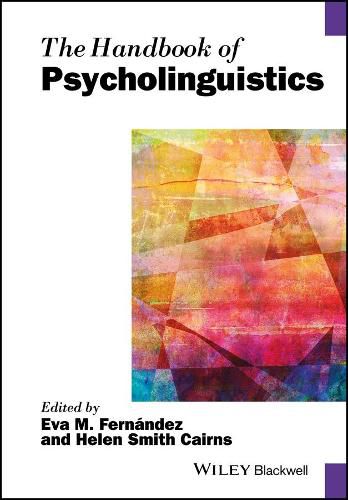Readings Newsletter
Become a Readings Member to make your shopping experience even easier.
Sign in or sign up for free!
You’re not far away from qualifying for FREE standard shipping within Australia
You’ve qualified for FREE standard shipping within Australia
The cart is loading…






Incorporating approaches from linguistics and psychology, The Handbook of Psycholinguistics explores language processing and language acquisition from an array of perspectives and features cutting edge research from cognitive science, neuroscience, and other related fields.
The Handbook provides readers with a comprehensive review of the current state of the field, with an emphasis on research trends most likely to determine the shape of psycholinguistics in the years ahead. The chapters are organized into three parts, corresponding to the major areas of psycholinguists: production, comprehension, and acquisition. The collection of chapters, written by a team of international scholars, incorporates multilingual populations and neurolinguistic dimensions. Each of the three sections also features an overview chapter in which readers are introduced to the different theoretical perspectives guiding research in the area covered in that section.
Timely, comprehensive, and authoritative, The Handbook of Psycholinguistics is a valuable addition to the reference shelves of researchers in psychology, linguistics, and cognitive science, as well as advanced undergraduates and graduate students interested in how language works in the human mind and how language is acquired.
$9.00 standard shipping within Australia
FREE standard shipping within Australia for orders over $100.00
Express & International shipping calculated at checkout
Incorporating approaches from linguistics and psychology, The Handbook of Psycholinguistics explores language processing and language acquisition from an array of perspectives and features cutting edge research from cognitive science, neuroscience, and other related fields.
The Handbook provides readers with a comprehensive review of the current state of the field, with an emphasis on research trends most likely to determine the shape of psycholinguistics in the years ahead. The chapters are organized into three parts, corresponding to the major areas of psycholinguists: production, comprehension, and acquisition. The collection of chapters, written by a team of international scholars, incorporates multilingual populations and neurolinguistic dimensions. Each of the three sections also features an overview chapter in which readers are introduced to the different theoretical perspectives guiding research in the area covered in that section.
Timely, comprehensive, and authoritative, The Handbook of Psycholinguistics is a valuable addition to the reference shelves of researchers in psychology, linguistics, and cognitive science, as well as advanced undergraduates and graduate students interested in how language works in the human mind and how language is acquired.